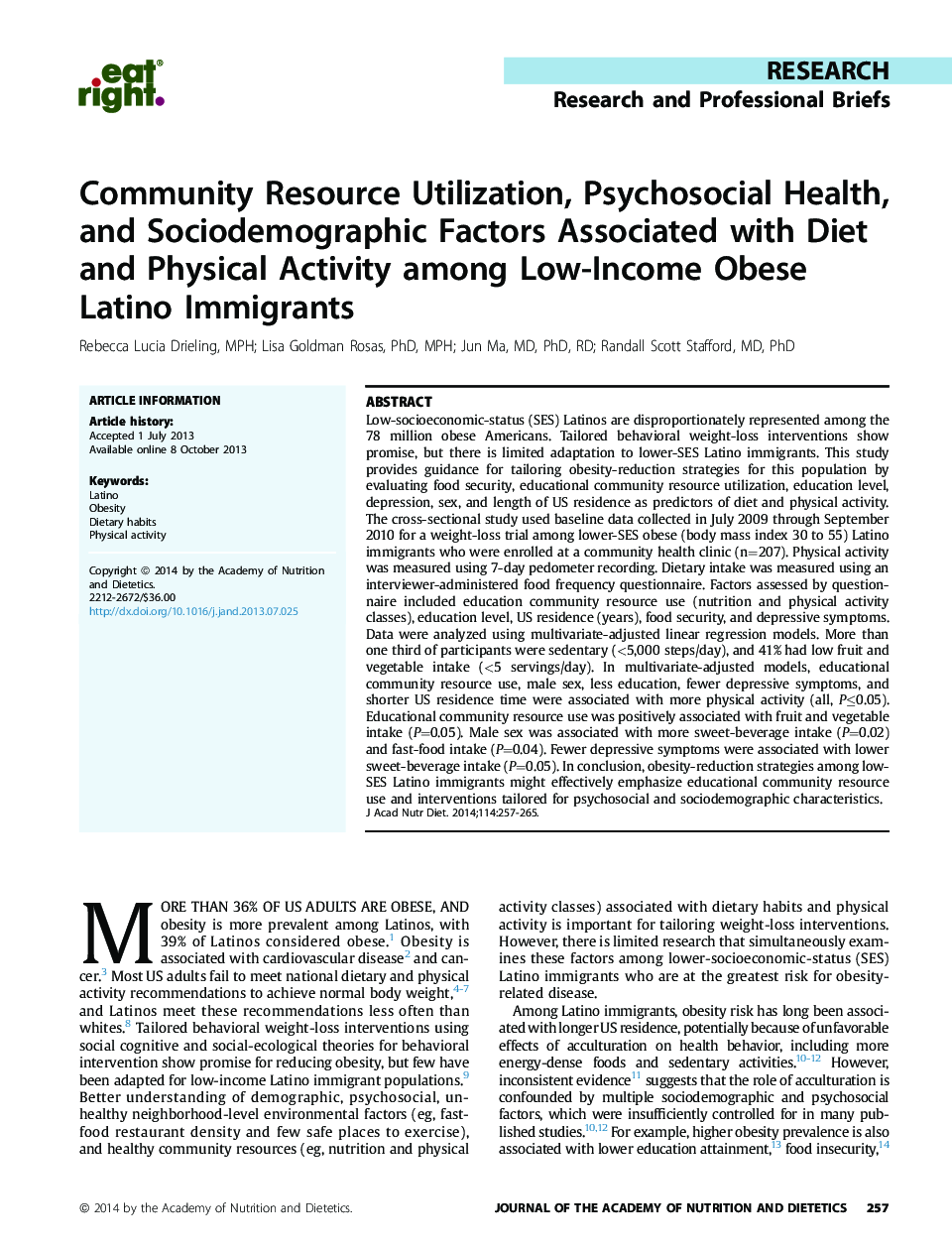| Article ID | Journal | Published Year | Pages | File Type |
|---|---|---|---|---|
| 5869690 | Journal of the Academy of Nutrition and Dietetics | 2014 | 9 Pages |
Abstract
Low-socioeconomic-status (SES) Latinos are disproportionately represented among the 78 million obese Americans. Tailored behavioral weight-loss interventions show promise, but there is limited adaptation to lower-SES Latino immigrants. This study provides guidance for tailoring obesity-reduction strategies for this population by evaluating food security, educational community resource utilization, education level, depression, sex, and length of US residence as predictors of diet and physical activity. The cross-sectional study used baseline data collected in July 2009 through September 2010 for a weight-loss trial among lower-SES obese (body mass index 30 to 55) Latino immigrants who were enrolled at a community health clinic (n=207). Physical activity was measured using 7-day pedometer recording. Dietary intake was measured using an interviewer-administered food frequency questionnaire. Factors assessed by questionnaire included education community resource use (nutrition and physical activity classes), education level, US residence (years), food security, and depressive symptoms. Data were analyzed using multivariate-adjusted linear regression models. More than one third of participants were sedentary (<5,000 steps/day), and 41% had low fruit and vegetable intake (<5 servings/day). In multivariate-adjusted models, educational community resource use, male sex, less education, fewer depressive symptoms, and shorter US residence time were associated with more physical activity (all, Pâ¤0.05). Educational community resource use was positively associated with fruit and vegetable intake (P=0.05). Male sex was associated with more sweet-beverage intake (P=0.02) and fast-food intake (P=0.04). Fewer depressive symptoms were associated with lower sweet-beverage intake (P=0.05). In conclusion, obesity-reduction strategies among low-SES Latino immigrants might effectively emphasize educational community resource use and interventions tailored for psychosocial and sociodemographic characteristics.
Related Topics
Life Sciences
Agricultural and Biological Sciences
Food Science
Authors
Rebecca Lucia MPH, Lisa PhD, MPH, Jun MD, PhD, RD, Randall Scott MD, PhD,
